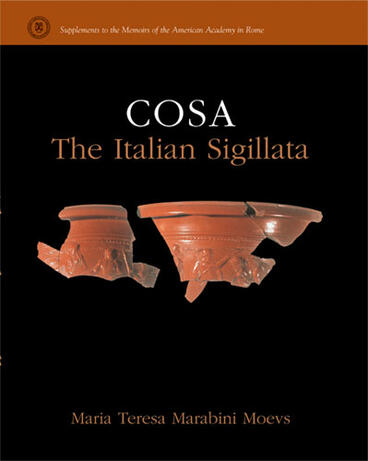Cosa
The Italian Sigillata
A detailed description of site findings from one of the most important sources on Republican and Early Imperial Etruria
Description
This book details Maria Teresa Marabini Moevs's findings of Italian Sigillata pottery at the Cosa excavation site, an invaluable source of information on Roman colonization, urbanism, and daily life since excavation began in 1948. The exceptional external conditions at Cosa preserved archaeological levels of natural strata from the early and late first century b.c., allowing documentation of the earliest phases of Italian Sigillata, which quickly became a major empire-wide export. This widely used pottery went through many changes in color and presentation during the Roman colonial era, in response to various transitions and developments in Roman society. The research presented in this volume of the series from the American Academy in Rome will be of great interest to the archaeological and classical studies community.
Maria Teresa Marabini Moevs is Professor of Classics and Archaeology Emerita at Rutgers and a former professor of Italian in the Department of Romance Languages at Douglass College. She was a Fellow in Classics at the American Academy in Rome in 1963-64 and previously a recipient of a Fulbright scholarship for Italian graduates in archaeology at the same institution. From the inception of her association with the Academy to the present she has been a member of the team responsible for the excavation and study of the Roman colony of Cosa. In the Memoirs of the American Academy in Rome she has published The Roman Thin Walled Pottery from Cosa (1973), The Italo-Megarian Ware at Cosa (1980), and Aco in Northern Etruria: The Workshop of Cusonius at Cosa (1980). She is the recipient of two national literary prizes for her critical studies on the influence of classical art and archaeology on contemporary Italian literature. She is married to the American composer Robert Moevs.
Maria Theresa Moevs is Professor Emerita of Classics, Rutgers University and author of The Roman Thin Walled Pottery from Cosa (1948-1954).

